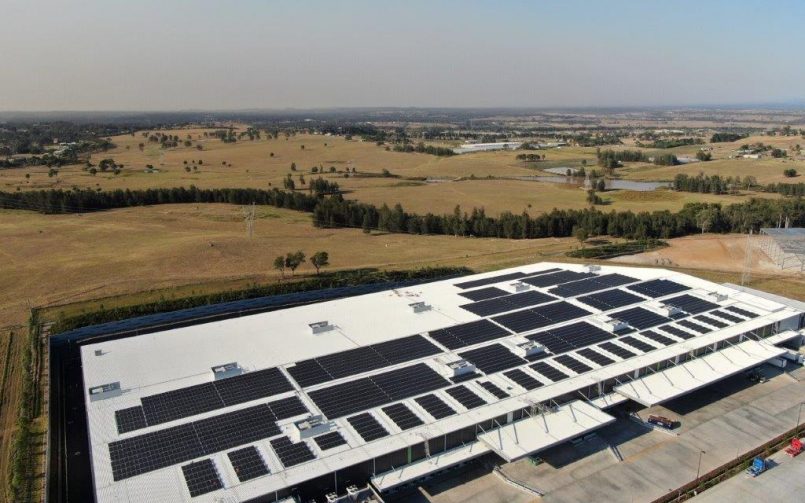Epho has commenced construction on what promises to be one of the most exciting new developments in the commercial PV arena. With the help of the company’s technology, a 1.7 MW solar array to be situated in western Sydney’s growing logistics hub of Horsley Park will be able to split its energy output and switch between the building and the grid.
The solar array is being installed on the roof of a 31,457 sqm new warehouse at Goodman’s Oakdale Industrial Estate, which is dedicated specifically to healthcare products storage and distribution and will commence operations at the end of this year. Thanks to Epho’s technology dubbed Bright Thinkers Power Stations (BTPS), the solar array will be different from conventional rooftop PV systems in its ability to direct solar energy either partially or fully to the consumer on-site, or directly trade the energy on the National Electricity Market.
The flexibility provided by BTPS also allows the tenant of the warehouse to access even more solar energy if the consumption of the site increases. The switching technology behind the project has been developed by Epho in collaboration with Siemens with an eye on the needs of property companies and their large corporate tenants.
On Wednesday, the Australian Renewable Energy Agency (ARENA) announced it had allocated $497,000 towards Epho’s first BTPS. “The project will unlock further investment and installation of solar PV on the entire usable roof space of commercial and industrial buildings,” ARENA CEO Darren Miller said. “This compares to the present practice where current rooftop solar PV systems are constrained in size to align with tenant demand.”
The BTPS technology is viewed as the key to Australia’s potential for tens of gigawatts of solar on industrial roofs as it overcomes various constraints, such as actual tenant requirements, the uncertainties of tenancy, and changes in energy retailers.“Epho developed the BTPS concept to allow large roof-top solar systems to be connected both behind-the-meter as well as an independent, market-registered power station,” said Oliver Hartley, Epho’s Managing Director. “Epho’s innovation potentially allows the entire roof area to be utilised and that the roof can be turned into market participating urban power station.”
As Hartley explained earlier this year, BTPS has a few more advantages compared to utility-scale solar developments. As generators with an aggregate supply of less than 30 MW, Bright Thinkers Power Stations could currently contribute to the NEM as “unscheduled” participants. That is, as an intermittent power supply their output would be accepted but not scheduled in AEMO’s co-ordinated dispatch process.
Another advantage is that solar farms that rent their space on the rooftops of urban industrial, retail or large-scale residential developments have fewer hurdles to negotiate to reach the approval stage. Finally, the stations’ proximity to grid connections and major consumers also reduces other risks associated with far-flung solar-farm development, such as for example marginal loss factors.
With a number of major projects under its belt, Epho has gained recognition as EPC and O&M provider in the commercial and industrial space. Aside from global property manager Goodman, the firm has worked with supermarket chain Aldi and recently installed one of the biggest solar car parks in Australia on top of Townsville’s Willows Shopping Center. Epho has also united the many stakeholders at Brisbane Airport to install 6 MW of solar across six sites covering a total area greater than twice the size of the Melbourne Cricket Ground.
This content is protected by copyright and may not be reused. If you want to cooperate with us and would like to reuse some of our content, please contact: editors@pv-magazine.com.









By submitting this form you agree to pv magazine using your data for the purposes of publishing your comment.
Your personal data will only be disclosed or otherwise transmitted to third parties for the purposes of spam filtering or if this is necessary for technical maintenance of the website. Any other transfer to third parties will not take place unless this is justified on the basis of applicable data protection regulations or if pv magazine is legally obliged to do so.
You may revoke this consent at any time with effect for the future, in which case your personal data will be deleted immediately. Otherwise, your data will be deleted if pv magazine has processed your request or the purpose of data storage is fulfilled.
Further information on data privacy can be found in our Data Protection Policy.